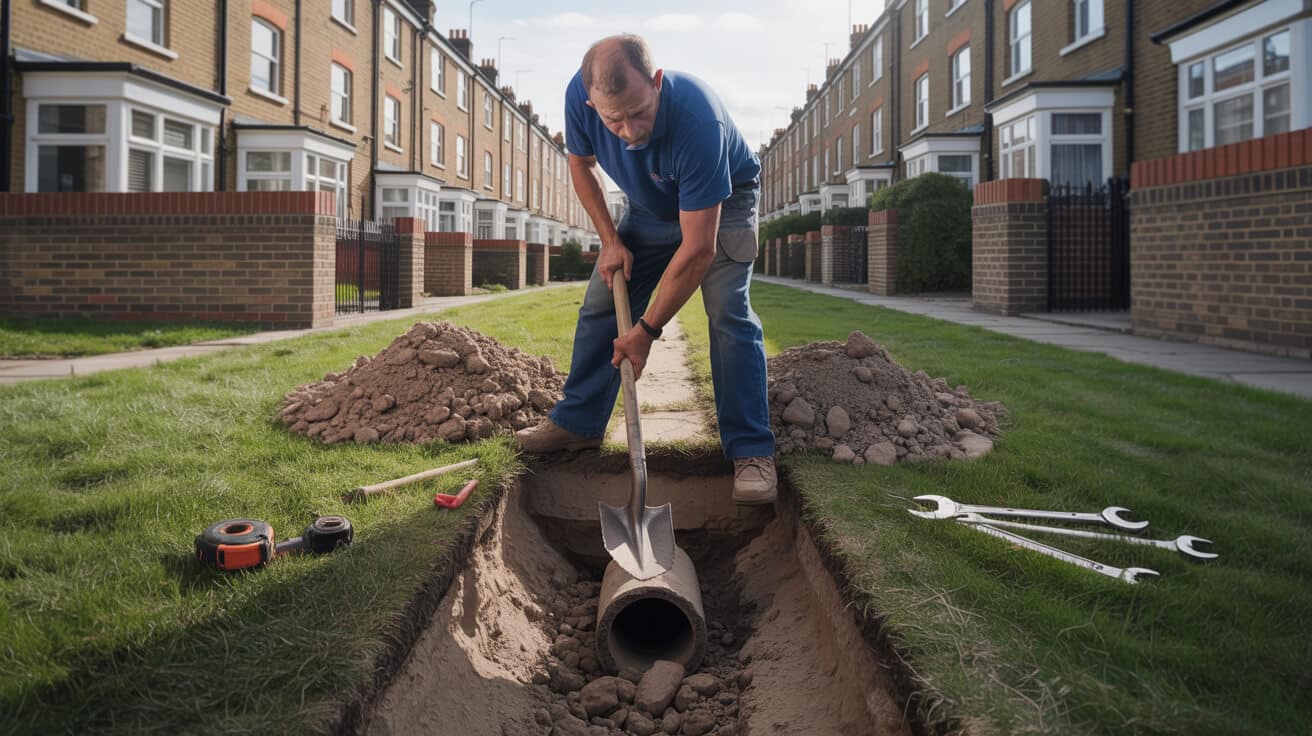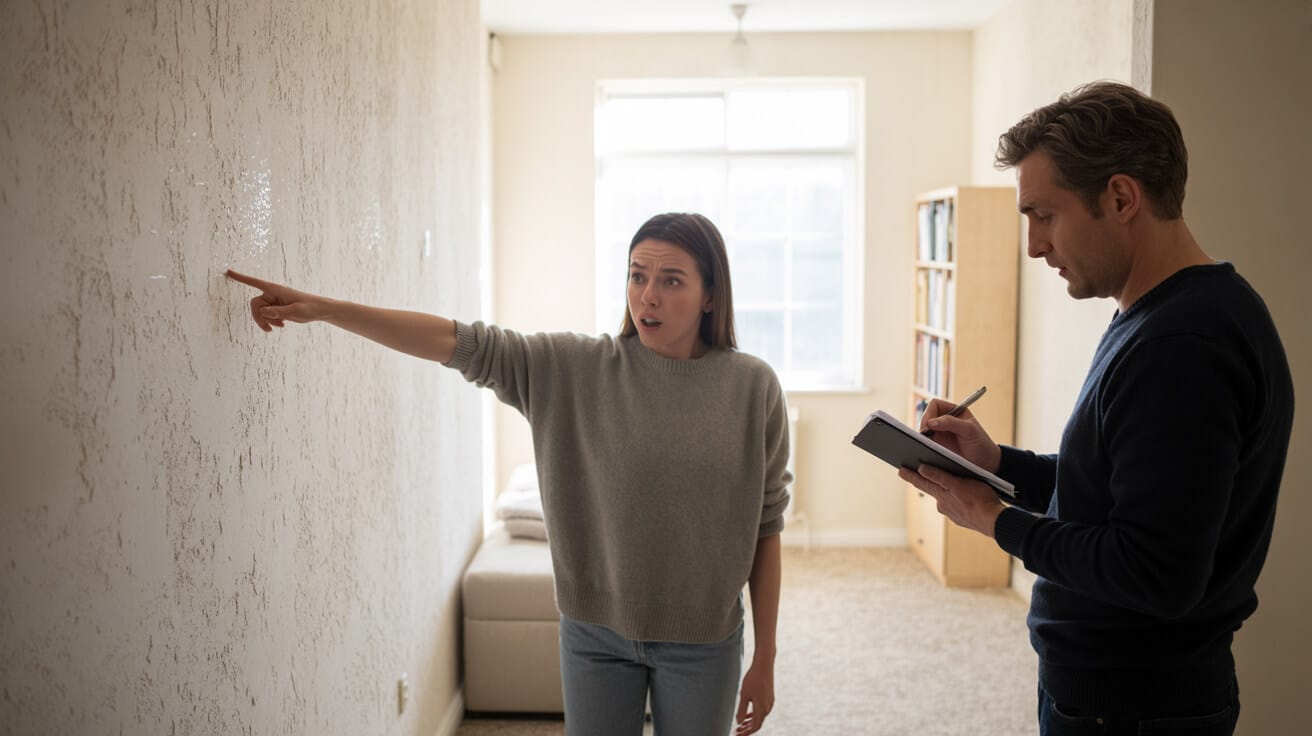 How to Balance Your Radiators for Even Heat Distribution
How to Balance Your Radiators for Even Heat Distribution
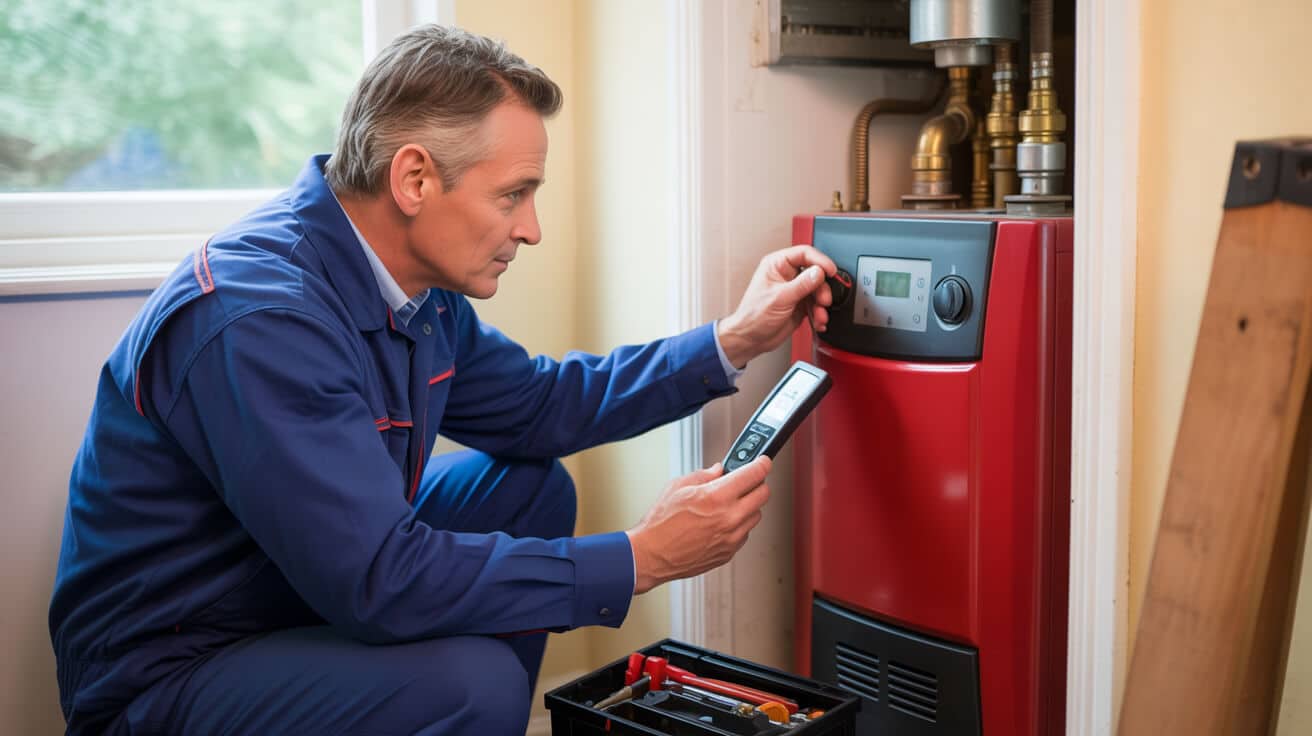
Why Are Some Rooms in Your Property Always Colder Than Others?
Every property, from new-build flats to heritage offices, eventually throws up its own hot-and-cold mystery: one room’s toasty, another’s an icicle, and the thermostat is at war with itself. This isn’t random bad luck—it’s the fingerprint of an unbalanced heating system, something that quietly chips away at comfort, hikes your energy bills, and sends tenants or staff looking for plug-in heaters. Whether you’re a homeowner, landlord, or managing agent, if certain rooms never seem to catch up temperature-wise, the issue is less about boiler brand or thermostat wizardry and more about how heat physically moves through your radiators.
No boiler, no matter how advanced, can compensate for uneven heat distribution.
The core of the problem is hydraulic imbalance: hot water rushing to easy-access radiators and trickling to everything else. That leaves those furthest from the boiler out in the cold, while radiators closer to the plant room can get too hot, too fast. It’s a comfort issue, but it also triggers thermostat feuds, the racket of gurgling pipes, and a steady grind on your boiler’s lifespan.
What Are the Classic Signs Your System is Out of Balance?
Most people notice the symptoms long before they know the cause:
- Radiators nearest the boiler get warm first—and often stay the warmest
- Some rooms, especially upper stories or extensions, remain chilly even when heating’s on full blast
- Turning the thermostat higher only creates overheated zones elsewhere
- System noises—rushing water, gurgles, even thumps—appear or worsen
These aren’t quirks. They are a direct signal that the system’s flow isn’t being distributed evenly—a hidden flaw that isn’t self-correcting.
Every time you add a radiator, upgrade the boiler, or re-route pipework, the fine balance changes. Many systems end up “limping along” with these pain points, leading to frustrated tenants, complaints to landlords or agencies, and rising operational costs for commercial premises.
If one office freezes while the reception staff roast, you’re ready for a balance.
A properly balanced system nudges every radiator into its fair share of warmth—no new hardware or pressure tactics, just flow tuned to fit your building.
Is Balancing Worth Doing If Your Boiler and Thermostat Are Modern?
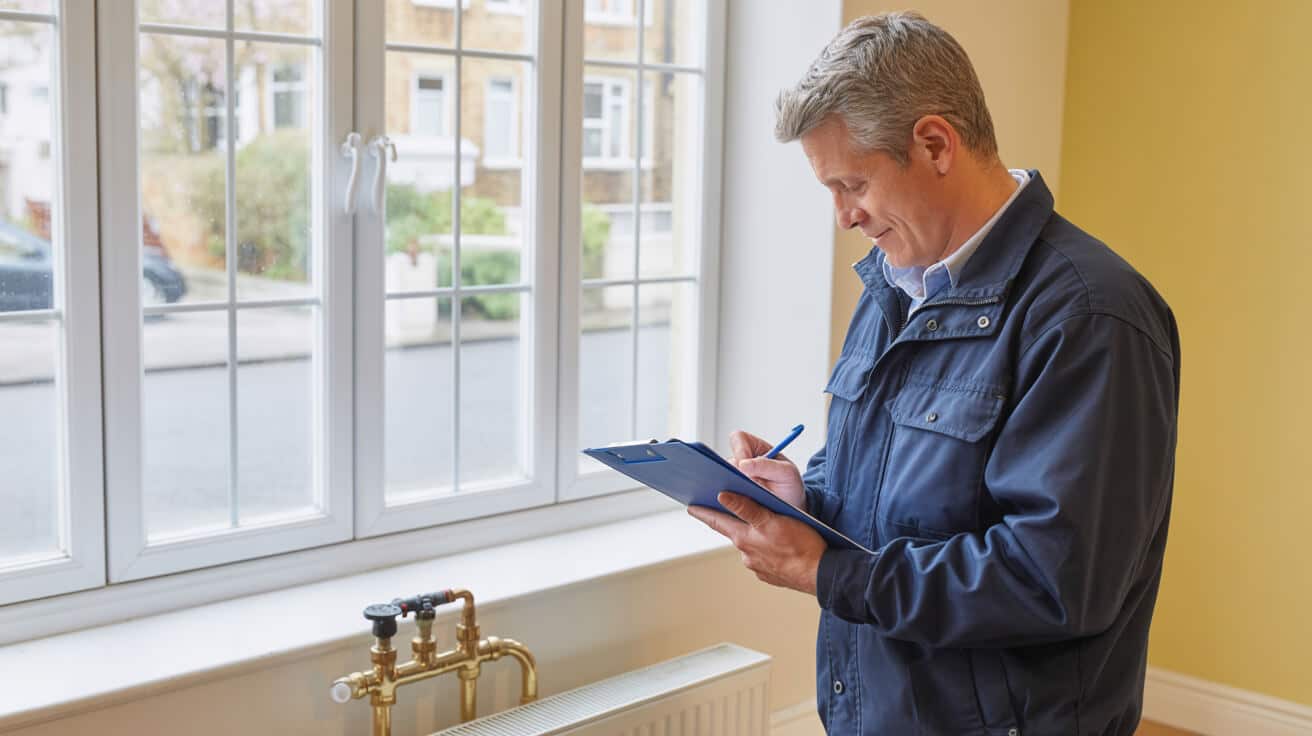
It’s easy to trust the kit: smart thermostat, premium boiler, annual service log. But the honest truth? Even the cleverest thermostats can’t magician-correct poor flow balance. They react to room sensors—not to what’s going on inside the pipes. An unbalanced system is like owning a sports car with flat tyres: power in the wrong places, and you’re paying for performance you never feel.
What does a persistent imbalance cause?
- Hot zones cluster close to the boiler, while far-off rooms stay stubbornly cold no matter the settings
- Endless thermostat battles: one side of the house boils, the other shivers
- “False” energy savings—because raising the thermostat just wastes more fuel, without actually fixing the heat spread
- Premature wear on pumps and boiler, forced to work overtime to chase a fair temperature
Cranking the thermostat just mixes frustration with higher bills.
Directing focus only on the boiler or the “nifty new app” usually misses the heart of the problem. Real comfort and value come from tuning the pipes—the unsung blood vessels of your heating system.
Why Regulators and EPC Assessors Care About Balancing
This isn’t an engineer’s vanity; regulations now insist on it:
- EPC (Energy Performance Certificate) scores directly account for whether your radiators deliver even heat or not—bad balance can drag your property rating down, with knock-on effects for letting or sale
- Modern best practice: WRAS and BS 6700 (plus current CIPHE guidance) treat balancing as a non-negotiable for proper system health
- Landlord compliance: under Section 11 of the Landlord and Tenant Act in the UK, inadequate temperature distribution is a maintenance risk that can break tenancy or trigger legal complaints
Routine balancing ties comfort, compliance, and asset value together—making it not just smart, but essential long-term property management.
When Should You Rebalance Your System?
Don’t leave it until complaints flood in. Schedule a balance if:
- You’ve replaced or added radiators, or changed pipework layouts
- Boiler installation or a major system flush has recently occurred
- There are repeat complaints about cold rooms, noise, rising bills, or system reliability
- You manage HMOs, blocks, or multi-property lettings: annual system balancing matches boiler servicing for importance
Regular balancing is foundational—the silent defender against discomfort, inefficiency, and compliance trouble.
Will Bleeding Radiators Fix Uneven Heating?
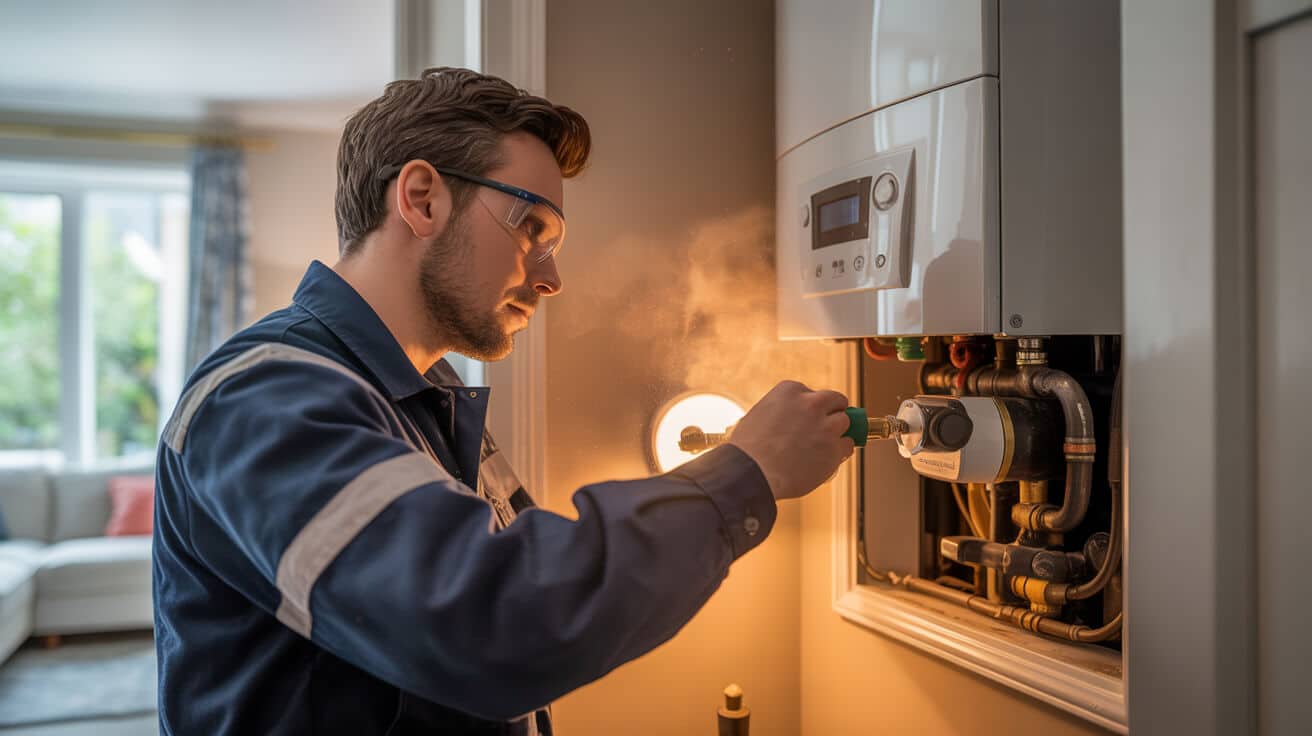
Bleeding—and balancing—sound similar, but only scratching one itch won’t cure the whole thing. Bleeding radiators is about banishing trapped air bubbles, letting hot water reach every fin. But balancing is about apportioning the heat—making sure every room gets its fair delivery. One without the other? Your system stays stuck.
Bleeding clears the air; balancing divides the warmth.
Here’s the right order of attack:
- Bleed first—get rid of airlocks (start on top floors, work your way down)
- Restore pressure—use the filling loop and double-check the boiler’s gauge
- Let the system run—observe which radiators heat first and which lag behind
What you need for the job:
- Radiator bleed key (or a specific make’s tool if required)
- Small bowl or towel for water drips
- A keen eye on the pressure dial—air removal lowers system pressure, so always top up after
Using a pocket screwdriver or makeshift key risks damaging your radiator bleed valves—a shortcut that often turns into a leak. Stick to the proper tools, and you’ll keep the job quick and clean.
With every Plumbers 4U service, bleeding’s the first step. It clears the field for accurate balancing and sets the foundation for a winter without complaints or cold toes.
How Do You Prepare Your Radiators and System for Effective Balancing?
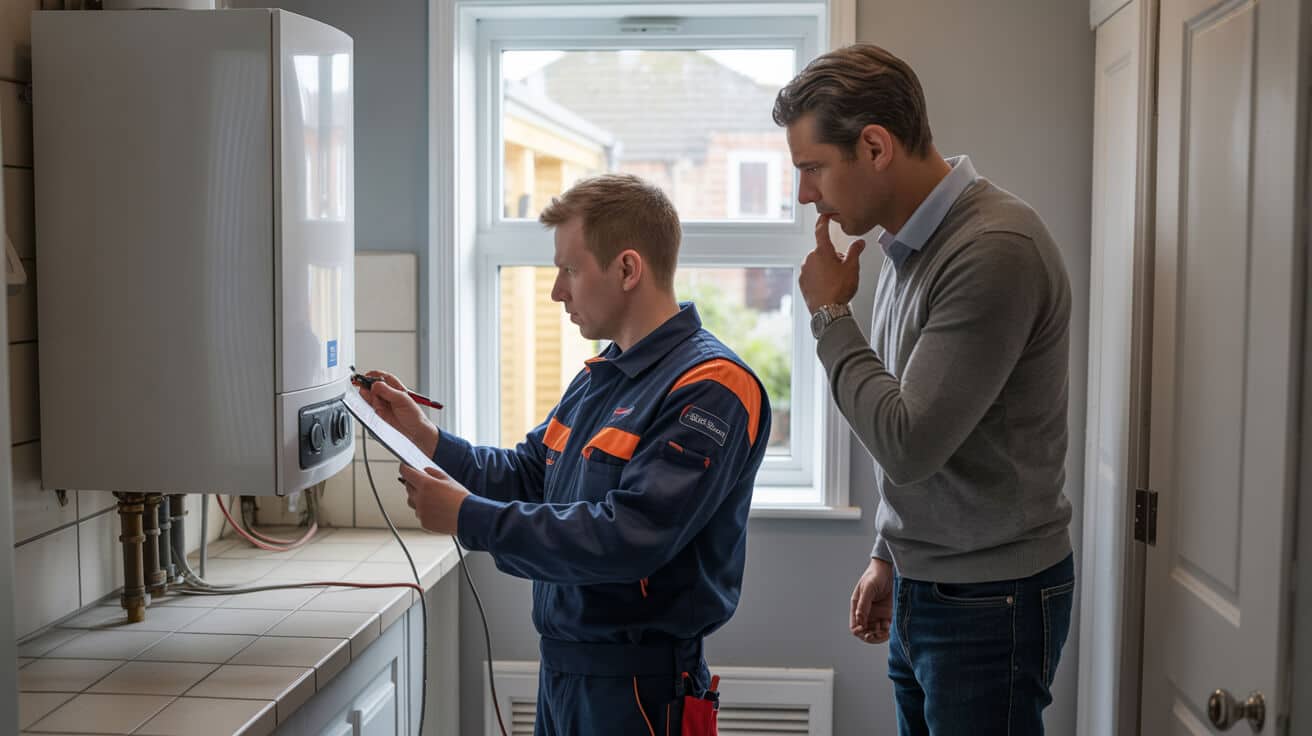
Great balancing is detail-driven. Radiators have two ends: one controls how much heat gets in, the other how much leaves. Adjust the wrong side—TRVs (thermostatic radiator valves)—and you only affect the temperature of that particular room. Adjust the lockshield valves and you’re tuning flow for the whole circuit.
What Is the Right Preparation Sequence?
- Switch off the heating system—wait for the rads to cool down before touching anything; warm pipes trap more air, and adjusting them hot can cause scalds
- Open all the radiator valves fully, both TRV and lockshield—you’re setting a clean slate to see the “natural flow” of your system
- Look for sticky or leaky valves—if you spot corrosion, resistance, or a minor drip, make a note to call in a pro: forcing hardware often breeds floods
- Turn the heating back on—watch which radiators heat first; that’s your “system roadmap” (closest ones draw heat fastest, most distant pick up last)
The sequence of radiator warm-up unlocks the real flow map of your pipework.
Kit list for balancing:
- Lockshield adjuster or spanner (sometimes a small wrench)
- Radiator bleed key
- Infrared thermometer (if you want numerical readings; your hands will work for rough calibration)
- Notepad, phone, or tablet to record heating order and settings
Compliance and Documentation
Take it as seriously as a boiler service:
- Always use gentle, incremental pressure on stuck valves—leverage means leaks
- Log every action, especially if you’re a landlord, block manager, or letting agent: records matter during audits or disputes
- Hire a WRAS, G3, and BS 6700–guided pro (like Plumbers 4U) for compliance and peace of mind
Getting this stage right pays off during re-rental, sale, or the next major boiler service.
How Do You Sequence and Document Each Radiator for Proper Balance?
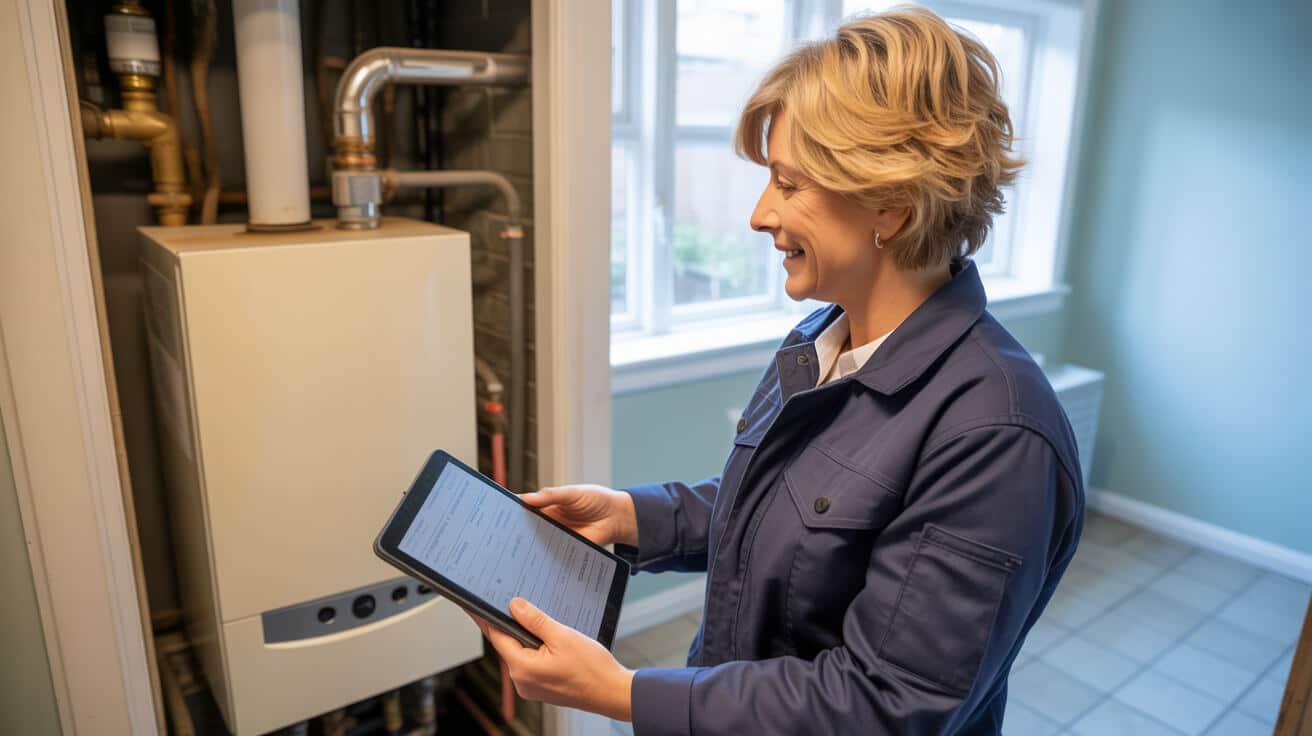
Jumping in with a guess won’t cut it. Proper balancing starts with a plan and finishes with a log your next engineer will thank you for.
How to Map the System
- Start with radiators closest to the boiler: —these will always heat up first (often found in hallways or boiler cupboards)
- Move methodically, noting the order each rad heats; in multi-storey buildings, treat each floor as its own circuit and work down the pipe route
- For offices or larger sites, diagram or number each radiator room-by-room—you’re setting a traceable audit trail, not just a “best guess”
Skipping this step means cold spots forever—mapping is organisation for heat.
Which Radiators Need the Most Adjustment?
- The radiators that rocket to full heat need their lockshields turned *most* towards closed; they’re hogging flow
- The laggards—always warm last—need their lockshields more open
- The balancing act is about creating an *approximate 11°C difference* between the input and output pipes on each rad (touch for warmth, or use an infrared thermometer)
For commercial, large, or system-critical properties: Plumbers 4U use digital logs, tagged photos, and mapped diagrams to ensure repeatable service and airtight compliance.
How to Document for Compliance and Reliability
- Take before-and-after photos of all lockshield positions
- Write down settings, room names, and findings—store these digitally if possible
- Keep logs attached to the boiler service or asset file; they’re gold for warranty protection, audits, and re-let or resale
The next time you swap a boiler or chase a complaint, you’ll know exactly where to start.
What Is the Professional Step-by-Step Balancing Method?

This is where diagnostic skill meets hands-on adjustments. Most seasoned heating engineers (and pain-free landlords) rely on a repeatable sequence:
The Field-Tested Balancing Routine
- Identify the fastest-heating radiator (closest to the plant or boiler)
- Shut its lockshield valve completely, then open just a quarter turn (roughly 90 degrees)
- Move on, in sequence, opening each lockshield slightly wider as you get further from the boiler
- Check pipe temperatures at both ends of every radiator. The goal? A temperature drop of roughly 11°C between the intake (hot side) and return (cool side)
- Infrared thermometers make this precise, but skilled fingertips work for relative checks
- Revisit and fine-tune
- Are rooms heating evenly? If not, repeat minor tweaks—often needed in houses with many radiators or large offices
- Consistency matters more than perfection
- Final bleed and pressure top-up—any closed valve changes may encourage small air pockets; finish up with another bleed and confirm boiler pressure
A consistent 11°C drop means energy is being used, not wasted. *(Energy Saving Trust, 2023)*
Expert Tips That Set Real Pros Apart
- Highlight any stubborn rads that needed large tweaks—these may identify slow leaks or future blockages before they become an emergency
- Keep an up-to-date log—critical for let properties, multi-site blocks, and offices with rotating facilities teams
- Use tamper stickers or digital logs for multi-tenant HMOs or properties with frequent contractor turnover
Signal for help: If you hit a stuck lockshield, the balancing job fails to “stick,” or you’re managing a block with multi-zone headaches, Plumbers 4U’s WRAS and G3–certified team is your go-to.
Does Radiator Balancing Really Lower Bills and Boost System Lifespan?
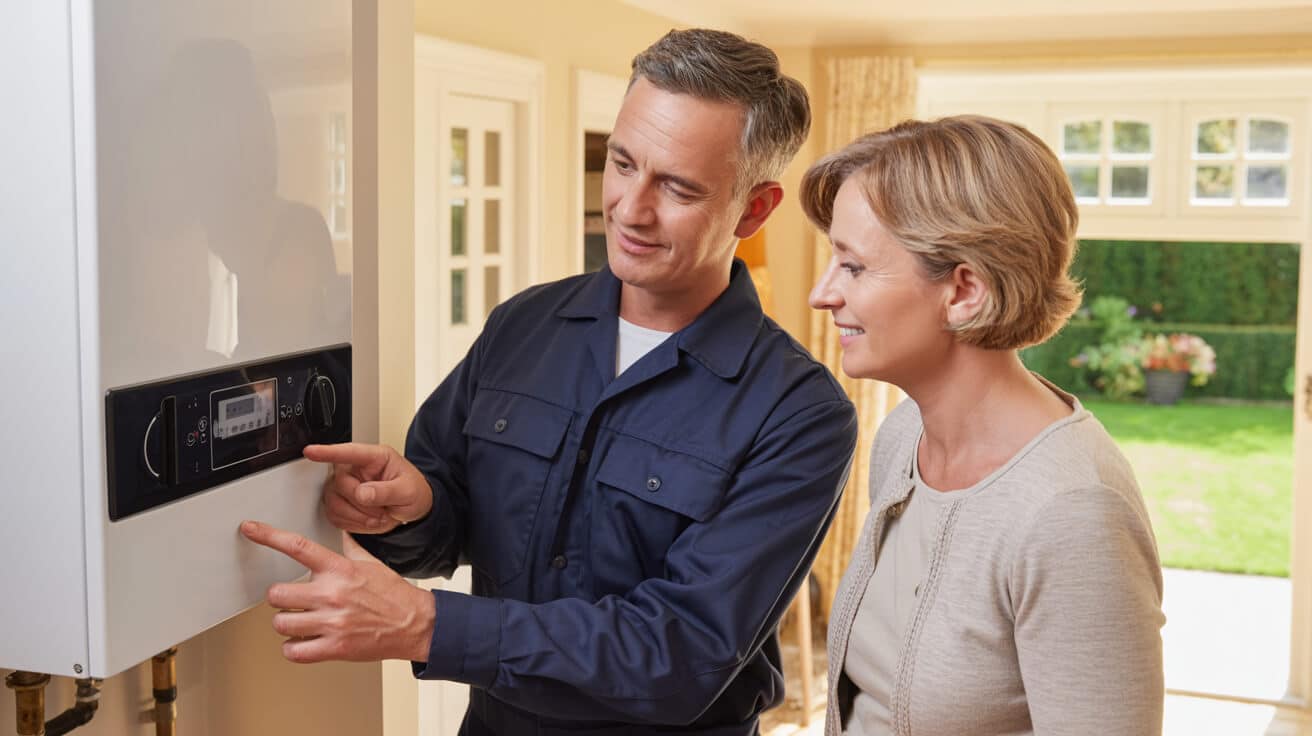
There’s nothing speculative here. Balanced radiators deliver measurable improvements that you’ll see reflected in your comfort, your heating costs, and your annual maintenance spend.
Direct financial and operational wins:
- Up to 15% off your heating bill—smarter heat distribution means shorter boiler run-times, lower fuel use, and less wear (Energy Saving Trust, 2023)
- Longer equipment life: when pumps and boilers don’t strain to chase “lost rooms,” repairs and replacements decline
- Quieter, smoother system: water hammer, pipe noise, and random gurgling fade as pressure’s evened out
Professional balancing pays back fast—usually before next winter’s done.
Why Owners and Managers Love Documented Balancing
- Reduced complaints and reactive call-outs, especially from tenants and commercial occupants
- Improved EPC ratings—felt in property value, rental eligibility, and regulatory favour
- Documented diligence—keeps insurers and auditors off your back
A practical tip: log “before and after” data—note down complaints, thermometer readings, and even bill swings. This turns vague “feeling warmer” into numbers you can trust and share with stakeholders, EPC assessors, or new tenants.
What Are the Hidden Costs of Neglecting System Balance?

Think a “bit chilly” room is just character? It’s more often a warning sign—a silent cost centre that only grows.
Downside risks of ignoring imbalance:
- Increased occupancy risk: cold rooms lead to tenant churn, negative reviews, or even voids for landlords and agents
- Higher maintenance costs: boilers and pumps that never rest wear out fast and fail more often
- More insurance scrutiny: portable heaters and reported cold zones raise red flags in property claims
- Business hit: in offices or shops, cold patches mean unhappy staff and lost retail trade
Skipping regular balancing is like cutting corners on car brakes—you only notice when real trouble hits.
For most properties, the cost of one call-out for “no heat” or “cold spot” easily eclipses the cost of a full balancing audit—proactive beats reactive, every time.
Do Smart Controls Replace the Need to Manually Balance the System?
Tech can manage, tweak, and optimise timing, but the underlying hydraulics—water flow and physical heat spread—must still be sorted the traditional way. smart thermostats and app-linked zone controls are fantastic for tailoring temperature once the system is balanced, not before.
smart controls make good systems better; but can’t rescue heat flow gone rogue.
The high-performance heating trio:
- Manual lockshield balancing
- Smart controls for day-to-day scheduling and zone preferences
- Full documentation—a system log, not just “set and forget”
Where Smart Helps—and Where it Falls Flat
- Automation flags trouble: alerting you if a room habitually misses temperature targets or drifts out of sync. That’s a prompt to check or re-balance
- Digital logs simplify troubleshooting, support, and even EPC confirmation
- Some modern boilers have “autobalance” settings, but in practice, a hands-on valve adjustment delivers the base layer every system needs
At Plumbers 4U, balancing always pairs traditional tools with a tech-forward final handover—logs, photos, and user pointers for hassle-free self-testing and planning.
Ready for a Professional Radiator Balance? Here’s What You Get from Plumbers 4U
Even heating is a hallmark of a well-run property—it’s proof of care, foresight, and technical know-how. Don’t accept “just good enough”; let every room do its share without the drama.
What Plumbers 4U offers:
- Complete bleed, lockshield balance, and flow mapping for every radiator—large or complex systems included
- Compliance throughout: every adjustment aligns with WRAS, BS 6700, G3, and landlord best practice
- Clear handover packs for homeowners, landlords, and agents—explained in plain language, tailored to real use, never generic
- Line-item, transparent pricing: you know exactly what’s being done and why—no mystery extras, no hard sell
- Staff and resident training included: know how to check or tweak settings well after we’ve gone
When rooms are quietly, reliably warm, everyone sleeps better—and so does your asset value.
Stop chasing after temporary fixes. Book your full-system balancing audit with Plumbers 4U today—because silent problems never solve themselves, but a well-tuned system pays you back every single day.
Frequently Asked Questions
What fresh benefits can professional radiator balancing provide today that most UK property owners miss?
Skilled radiator balancing offers more than just “even heat”—it actively boosts compliance, reduces hidden expenses, and enhances property value in ways most people don’t realise. In the UK’s newer or upgraded homes, modern heating systems often include everything from unvented cylinders and dual zones to smart stats, layered controls, and unusually shaped towel rails. Each of these upgrades creates delicate flow challenges that rough DIY tweaking cannot solve.
Every Plumbers 4U engineer uses digital tools, precise temperature probes, and printed logbooks to calibrate your system according to BS 6700 and WRAS standards. When a building has had a recent extension, new radiators, or a smart thermostat upgrade, true balancing becomes essential—not optional—if you want to avoid compliance slips or long-term system strain. For landlords and block managers, this means passing EPC surveys and audit checks is faster, with written proof. For homeowners, energy savings often outpace the cost in the first year.
The right tweak today turns into years of silent savings, stress prevention, and a property asset that stands tall under scrutiny.
Documentation becomes your best friend if you rent out, plan to sell, or face insurance review. Plumbers 4U aligns balancing to your property’s unique blueprint, preserving system health and peace of mind—so you never settle for lukewarm answers again.
Table: Real-World Gains from Professional Balancing
| Challenge | Pro Solution from Plumbers 4U | Long-Term Gain |
|---|---|---|
| Cold spare rooms | Lockshield settings by digital probe | Full-home comfort, fewer complaints |
| Modulatable controls (smart stat) | zoning calibration, system logging | Lower bills, modern standard proof |
| Recent property upgrades | Extension flow recalibration | Maintains compliance & asset value |
| Portfolio/landlord obligations | Documented settings, logbook supplied | Passes EPC, audit & insurance first time |
| High monthly gas costs | Thermal loss hunt & balance correction | Substantial bill reductions |
Which warning signs and patterns reveal an unbalanced radiator system before major issues arise?
Before a radiator “goes cold” for good, your home shouts quieter signals that balancing has fallen out of step. Watch for a room that’s always late to warm up—even when its valve is wide open—or for neighbours in flats above or below to start complaining about “that one cold spot.” Properties with underfloor heating often see odd pockets where floors are warm but adjacent rads remain cool.
Be mindful of these overlooked patterns:
- Thermostat wars: Family or tenants constantly adjusting the thermostat, trying to “even out” heat between awkward areas—a hidden call for recalibration.
- Noisy radiators after a powerflush: Persistent gurgling, popping, or ticking from pipes or radiators suggests trapped air or improper valve sequencing, not a chemical issue.
- Oddly high energy bills despite service: When bills jump without a hardware fault, system inefficiency due to poor balance is the silent culprit.
- Frequent engineer callbacks: Multiple service visits to “fix” heat or noise complaints point to unresolved balancing, not new component faults.
When you spot more frustration than flow, your system is raising a flag for intervention—not just a quick bleed or blanket upgrade.
Leaving such signs unresolved leads to higher pump strain, more rapid sludge build-up, and eventual compliance headaches. Plumbers 4U’s audit-based balancing drills down to your property history to trace the cause, so each revisit is future-proofed—not just a bandage.
Warning Signal Checklist
- Slow or uneven room warming
- Widespread noise after servicing
- Repeated complaints from recurring locations
- Sudden utility bill spikes
- “Global” thermostat arguments within a property
- Engineers revisiting old complaints
How do UK engineers achieve lasting radiator balance, and why does it matter for rental, commercial, or HMO legal compliance?
A UK engineer’s approach goes far beyond spinning a few valves; it’s about methodical, regulation-aligned, and fully documented calibration. Plumbers 4U trains its teams to measure, standardise, and log every radiator, especially for properties inspected by local authorities or managed across multiple tenancies.
Step-by-Step: The Compliance-First Balancing Procedure
- System cooling and thorough bleeding: Every circuit, starting with higher floors, is depressurised, then bled to remove air that can skew measurements.
- Temperature mapping for each radiator: Using digital probes, engineers target a flow/return differential of 10–12°C, the British industry benchmark for efficiency.
- Lockshield and TRV identification: Sticking, incorrectly swapped, or seized valves are flagged (and where possible, fixed or quoted for replacement) to maintain legal compliance.
- Diagnostic log and asset file: Each valve’s setting, sequence, and anomaly gets written into a property-specific log for the asset’s history file.
- Cross-check with latest codes: Every step cross-references Part L, G3, and BS 6700—meeting both domestic and block-managed property standards.
This detail isn’t just bureaucracy: BS 6700 and MEES require system documentation. Logbook traceability is evidence in landlord-tenant disputes or when transferring property. Without this log, an otherwise legal instal can fail an EPC audit or trigger disputes at end of tenancy.
Your best defence against compliance headaches and asset devaluation is a balancing log that tracks every change, signed and ready for any inspection.
Best of all, well-documented balancing is a one-time fix—so annual maintenance becomes routine, not a guessing game.
How does the professional approach to balancing outperform every DIY method—especially in today’s complex systems?
“Bleed, wiggle, adjust” might have worked two decades ago, but the complexity of today’s systems turns DIY radiator balancing into a minefield. The most well-meaning efforts can introduce, rather than fix, silent flow problems.
Professionals outperform because they:
- Account for system age and upgrades: Recognising how 22mm mains pipes, old microbore circuits, or underfloor heating loops change the “order of operations.”
- Work with diagnostics, not guesswork: Infrared and probe thermometers, thermal imaging for cold spots, and acoustic sensors for hidden blockages locate what eyes and fingers can’t.
- Log, label, and leave proof: Each change is written up in service notes—creating a legacy for landlords, letting agents, or future owners.
- Prioritise compliance at every step: Instead of treating “bodge jobs,” engineers use WRAS-approved fittings, check expansion allowance, and maintain documentation—every action aligns with latest regulation.
DIYers often miss the order-of-room cooling, bleed too late, touch TRVs (not lockshields), or simply forget last year’s settings. Worse, new radiators, towel rails, or smart thermostats installed since the last attempt may confuse everything further. When the next engineer is called, they start over, often chasing a problem created by poor records.
The gap between good enough and optimal, futureproofed, and compliant is the engineer’s disciplined record—and your property’s silent guardian.
Plumbers 4U treat every system like a long-game asset—never a once-off “tweak and hope.”
Why is regular radiator balancing now central to energy ratings, lower property costs, and long-term satisfaction?
Modern UK regulations and smart home upgrades mean system balancing isn’t a “nice to have”—it’s a recurring service, as pivotal as annual gas safety or EPC checks.
Regular balancing is imperative:
- Each time a new boiler or zone is added: Any system overhaul impacts flow everywhere, making previous settings obsolete overnight.
- After every full system flush or chemical clean: Flushes redistribute debris and air, demanding a new balancing pass for efficiency.
- At every change in occupancy or ownership: Documented logs protect asset value and fulfil landlord requirements under current MEES rules.
- Following any repetitive complaint or service call: Persistent cold rooms or noisy radiators are rarely “bad luck”—but neglected balance.
An annual or post-project balance pays off in cheaper fuel bills, lower risk of pump or boiler damage, and highly predictable room comfort. Letting agents benefit most, as handovers between tenants are smoother and portfolios pass audits without delay.
Properties treated to regular, logged balancing become set and forget assets—always compliant, always ready for the next inspection, always cost-effective.
Plumbers 4U recommends property managers make balancing part of routine servicing—another crucial line in the asset audit file.
How does professional balancing deepen system value through evidence, compliance, and futureproofing?
The quiet power of professional balancing lies in the paper trail and the resilience it imparts:
- Compliance without headaches: Every setting aligns with WRAS, G3, BS 6700, and EPC standards—no late-night panic before inspections or insurance claims.
- Prompt issue detection: Engineers catch early signs of trapped air, sludge, faulty zones, or pressure anomalies—nipping £1,000+ repairs in the bud.
- Proof at every turn: Whether upgrading, renting, or selling, audited balancing logs qualify the property—meeting new energy targets and satisfying even the toughest client or surveyor.
- Easier future improvement: Modern upgrades, from heat pumps to app-controlled boilers, demand documented baselines for warranty and integration.
Without this record, you’re resetting progress every maintenance cycle. Each engineer is forced to “start blind,” missing the chance to intervene early or prove the asset’s value at handover.
When every detail is logged and aligned, your asset becomes quietly unstoppable—protected by evidence, respected by auditors, ready for tomorrow’s change.
Plumbers 4U’s balancing isn’t just warmth—it’s a competitive edge, documented, standardised, and engineered for the next era in property ownership.
Make your next heating season the most efficient, compliant, and hassle-free yet. Book radiator balancing with Plumbers 4U—where every detail is measured, every improvement proven, and your asset is always one step ahead. Your comfort is just the visible result.

